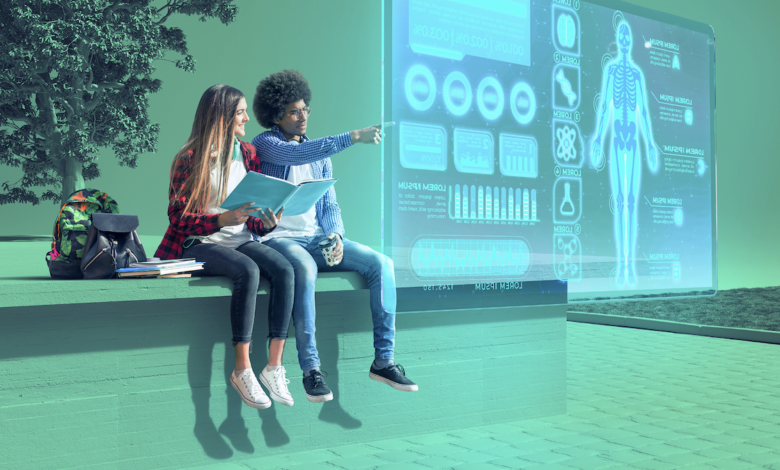Metaverse Education Market to Hit $19.3bn by 2028: Report

The Metaverse is primed to transform the education sector dramatically. As per a report from MarketsandMarkets, the Metaverse’s footprint in education is expected to leap from $3.9 billion in 2023 to a staggering $19.3 billion by 2028.
This shows a hefty annual growth rate of 37.7% during this period. This rapid expansion signifies the Metaverse’s potential to redefine how teaching and learning processes function, turning them into dynamic and interactive experiences. As we get closer to Metaverse education, let’s explore the factors driving this growth and the new learning opportunities it offers.
The AR Advantage in Education
Augmented Reality (AR) is leading the charge in this transformative wave. By breathing life into static textbook images and turning them into interactive 3D models, AR can significantly enhance educational experiences. Learners can now touch, play, and learn from complex concepts, considerably enriching their understanding.

Augmented reality overlays audio, video, and graphical elements onto our existing surroundings. This innovative technology employs four primary elements to layer digital imagery onto real-world environments: cameras and sensors, processing, projection, and reflection.
Each of these elements plays a unique role. For instance, cameras and sensors are capable of determining the depth of an image or assessing the distance between two objects before layering digital content over the user’s perspective.
Market Dynamics: Driving Factors and Challenges
Key factors pushing the growth of the Metaverse in education, according to the MarketsandMarkets report, include increased demand for industrial training, quick adoption of virtual technologies, falling VR headset prices, and immersive experiences that appeal to students.
However, several challenges temper this growth, such as the need for robust and scalable technology infrastructure. Potential health issues from prolonged use, and steep installation and maintenance costs of advanced Metaverse components are also challenges to overcome.
Moreover, the report emphasizes the importance of addressing concerns related to content development, digital inequality, and access issues. The continuous growth of the Metaverse in education necessitates innovative solutions to these challenges.

A Regional Perspective
Although Asia is currently at the forefront of Metaverse adoption in general, North America is at the forefront of embracing the Metaverse in education, as indicated in the report.
The MarketsandMarkets report predicts North America, particularly the United States, will dominate the Metaverse education market in 2023. This trend is anticipated to sustain through 2028. As universities adopt AR and VR technologies, immersive learning environments are set to become more commonplace.
Advantages of Metaverse Education
The Metaverse brings many advantages to the table in education, as the report points out. It offers an immersive learning environment, allowing practical applications, role-playing activities, and virtual field trips. It also presents a broad array of learning tools, enabling educators to tailor educational content and activities to students’ individual needs and preferences.
Furthermore, the Metaverse opens the door to global collaboration. It allows teachers and students from different corners of the world to work together in virtual environments. This fosters cooperation and social interaction and bridges geographical gaps, providing quality education to a broader audience.
As envisioned in the MarketsandMarkets report, the Metaverse promises big and innovative learning and teaching experiences. With its potential and benefits, it is poised to guide the future of education towards a more interactive, personalized, and inclusive era.





